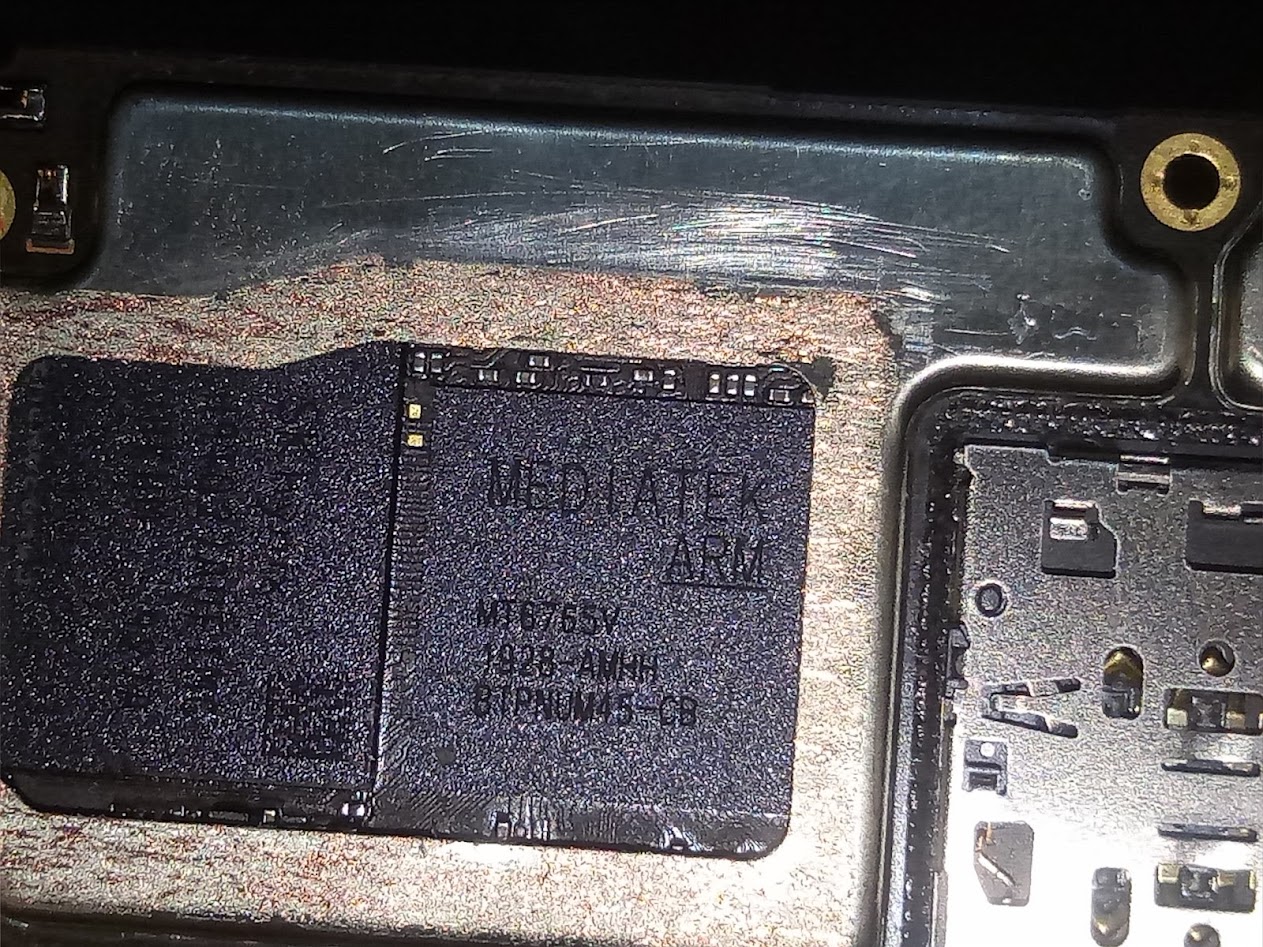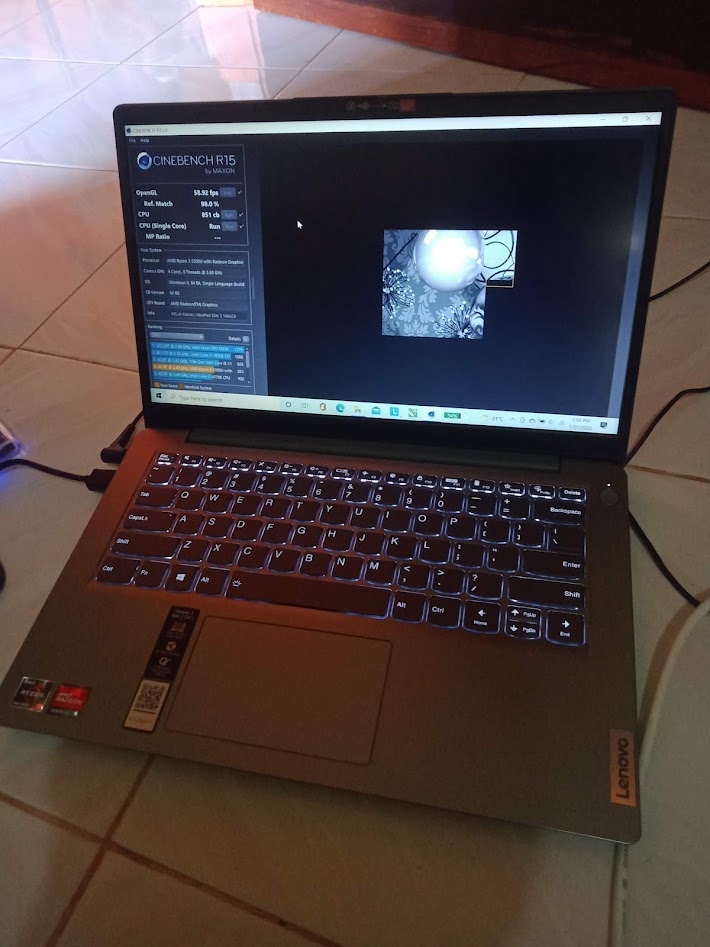Comparing: AMD Radeon Graphics Mobile (Lucienne, 384 Shaders) vs IMG PowerVR Rogue GE8320 680MHz
In this comparison, we analyze two Videocards: AMD Radeon Graphics Mobile (Lucienne, 384 Shaders) and IMG PowerVR Rogue GE8320 680MHz, using synthetic benchmark tests to evaluate their overall performance. This side-by-side comparison helps users understand which hardware delivers better value, speed, and efficiency based on standardized testing. Whether you're building a new system or upgrading an existing one, this benchmark-driven evaluation offers valuable insights to guide your decision.

AMD Radeon Graphics Mobile (Lucienne, 384 Shaders)
| Type: | Videocards |
|---|---|
| Brand: | AMD |
| Model: | Radeon Graphics Mobile (Lucienne, 384 Shaders) |

IMG PowerVR Rogue GE8320 680MHz
| Type: | Videocards |
|---|---|
| Brand: | Imagination |
| Model: | PowerVR GE8320 680MHz |
Specification Comparison Table
This specification comparison presents technical details of several devices or components to help you understand the key differences between each option. Use this table as a reference to determine which device best suits your needs.
| Specification | AMD Radeon Graphics Mobile (Lucienne, 384 Shaders) | IMG PowerVR Rogue GE8320 680MHz |
|---|---|---|
| Architecture | GCN 5.1 | PowerVR Series8XE |
| Codename | Lucienne | - |
| Buswidth | 128 bit | - |
| Clock | 1500 MHz - - | 400 MHz - 680 MHz |
| Memory Clock | 2GB DDR4 (SHARED) | - |
| Technology | 7 nm | 20 nm |
| Interface | IGP | IGP |
| Technology | 7 nm | 20 nm |
| Segment | Laptop | Mobile |
Submission Comparison Table
This submission comparison table displays the number and details of benchmark data submissions from various devices or components. This information helps you understand the performance based on the benchmarks that have been tested, as well as providing an overview of the consistency and popularity of the available benchmark results.
| No. | Benchmark Software | AMD Radeon Graphics Mobile (Lucienne, 384 Shaders) | IMG PowerVR Rogue GE8320 680MHz |
|---|---|---|---|
| 1 | 3DMark - Ice Storm Extreme |
65366 marks |
7779 marks |
Submission Comparison Chart
This chart visualizes the benchmark scores comparison between two hardware devices based on submitted data.
Media Gallery
A collection of photos of tested hardware. These images can help you identify the physical form, model, and variant of the hardware in question. These photos are from our own documentation, and if they are not available we may not be able to document them.
About Hardware AMD Radeon Graphics Mobile (Lucienne, 384 Shaders)
The AMD Radeon Graphics Mobile (Lucienne, 384 Shaders) is the integrated GPU featured in the AMD Ryzen 5 5300U, leveraging the powerful and efficient Vega architecture. This GPU packs 384 stream processors (also known as shaders) running at clock speeds up to 1.5 GHz, striking a fine balance between performance and power consumption. Manufactured using advanced 7nm fabrication technology, it offers excellent energy efficiency, making it an ideal choice for thin and light ultrabooks that require good graphical capabilities without compromising battery life. While it cannot compete with dedicated discrete GPUs, the Radeon Graphics integrated in the Ryzen 5 5300U delivers strong performance for everyday multimedia tasks such as HD video playback, photo editing, and casual gaming.
In terms of gaming, the Radeon Graphics excels in handling popular eSports titles like CS:GO, Valorant, and Dota 2, providing smooth gameplay at resolutions ranging from 720p up to 1080p with low to medium graphics settings. This makes it a great option for gamers on a budget or users who want to enjoy light gaming without the need for an expensive dedicated GPU. When compared to integrated Intel GPUs in the same segment, the Radeon Graphics in the Ryzen 5 5300U generally outperforms them due to the mature Vega architecture and higher number of shaders, offering better frame rates and graphical fidelity.
Despite its strengths, this integrated GPU still faces limitations with modern AAA games that demand more graphical horsepower and VRAM, where a discrete GPU becomes necessary for an optimal experience. Nonetheless, for users prioritizing a balanced performance-to-power ratio in a compact form factor, the AMD Radeon Graphics Mobile on the Ryzen 5 5300U remains a compelling choice for mid-range laptops, offering solid graphics capabilities for daily tasks, multimedia consumption, and casual gaming.
Hardware Detail:
Device: Lenovo IdeaPad Slim 3 14ALC6
CPU: Ryzen 3 5300U
RAM: 8GB DDR4 3200MHz Dual Channel (2x4GB)
OS: Windows 10, Windows 11
Saturday, 12 March 2022 11:04:31 | Update: 1 month ago
About Hardware IMG PowerVR Rogue GE8320 680MHz
The PowerVR GE8320 is Imagination Technologies' Rogue architecture-based integrated GPU embedded in the MediaTek Helio P35 (MT6765) SoC. The GPU comes with two shader clusters and runs at a frequency of up to 680 MHz, delivering good power efficiency and sufficient performance for lightweight graphics needs in entry-level smartphones.
With support for modern graphics APIs such as OpenGL ES 3.2, Vulkan 1.0, and OpenCL 1.2, the PowerVR GE8320 is capable of running a variety of multimedia applications and light games on Android devices. While not ideal for intensive 3D games or professional graphics applications, this GPU still provides a smooth user experience in everyday activities such as video playback, social media, browsing, and light multitasking.
This GPU is used in entry-level devices like the OPPO A5s and OPPO A15s, which feature 3/32GB and 4/64GB RAM and storage configurations, respectively. In a 30°C ambient temperature test using a DHT11 sensor, devices with this GPU showed fairly stable thermal performance. Using the OPPO A15s is more recommended for testing and using the latest apps due to its higher operating system support (Android 10), while some apps no longer support Android 8.
The PowerVR GE8320 GPU demonstrates competitive performance in a series of synthetic tests. In the 3DMark Ice Storm benchmark, this GPU achieved a score of 10,470 points, indicating its ability to handle light to medium graphics. In the 3DMark Sling Shot Extreme benchmark, the PowerVR GE8320 scored 404 points, reflecting its limits in handling heavy graphics processing based on OpenGL ES 3.1. Meanwhile, in the AnTuTu v9 GPU-specific benchmark, it recorded a score of 12,248 points, positioning it as an efficient entry-level graphics solution for everyday needs. Finally, in Geekbench 4 Compute, the GPU achieved a score of 3,284 points, demonstrating sufficient computational performance to run applications with basic graphics acceleration. Overall, the PowerVR GE8320 is suitable for use in mid-to-low-end mobile devices with moderate graphics requirements.
These benchmark results show that the PowerVR GE8320 is capable of handling basic graphics quite well, but it is not intended for heavy graphics workloads. This GPU is ideal for use in devices with HD screen resolutions that are focused on battery efficiency and a smooth daily usage experience.
Hardware Detail:
Device: OPPO A5s & OPPO A15s.
Device Specs: MediaTek MT6765, 3/32 (A5s), 4/64 (A15s), Android 8 (A5s), Android 10 (A15s).
Room Temperature: 30°C based on DHT11 Sensors.
* I use the OPPO A15s device as an addition to the Imagination PowerVR Rogue GE8320 680MHz hardware, because some applications do not support devices with Android 8 version
Sunday, 08 September 2019 11:02:46 | Update: 5 days ago



